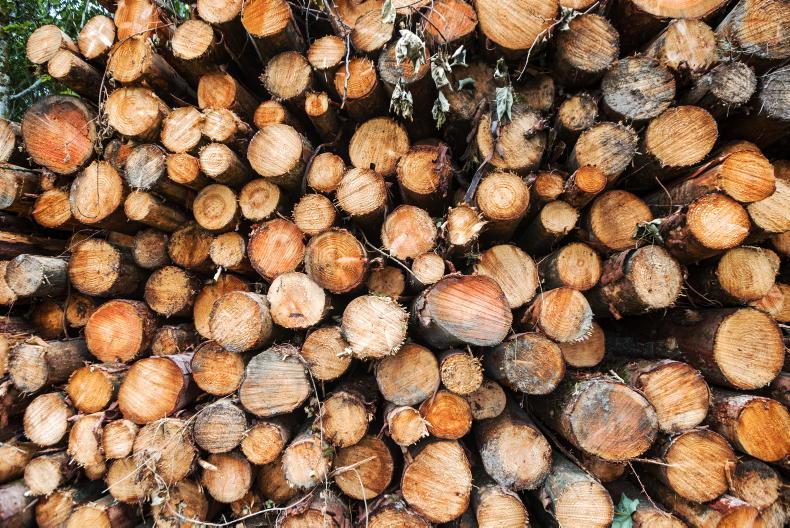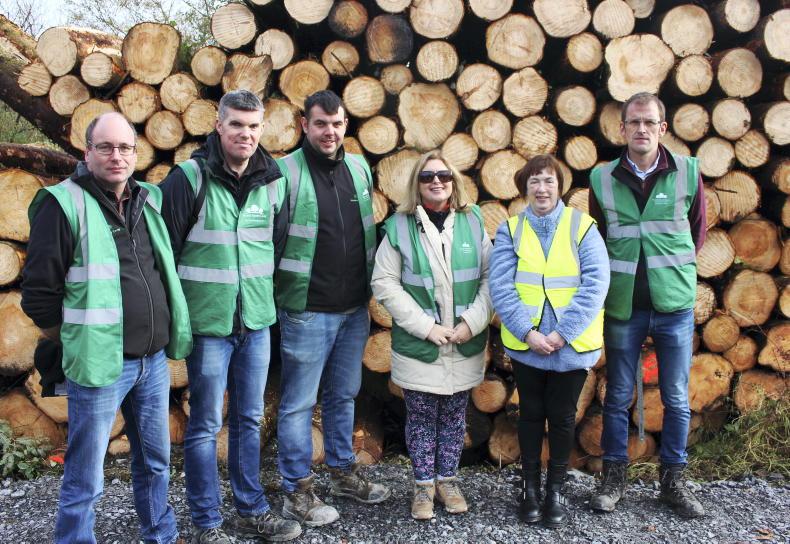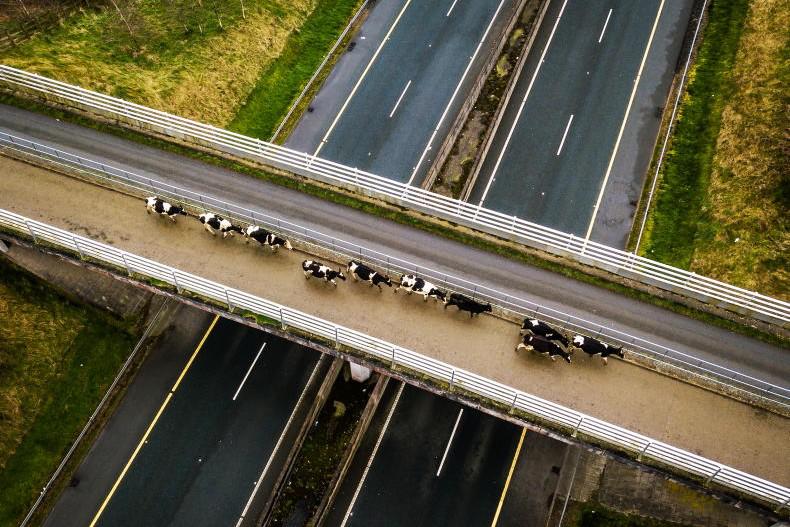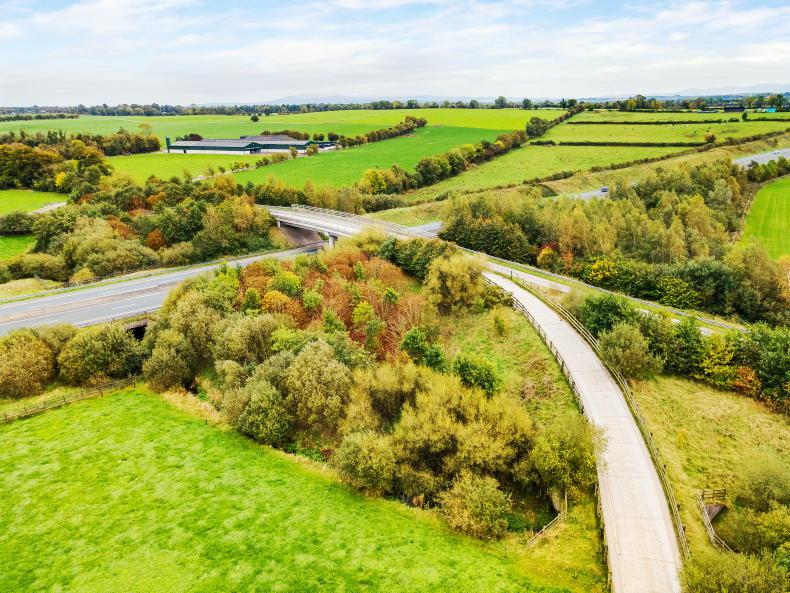Forestry has been experiencing an uncertain period in recent years. Afforestation has been in decline since 2010 but reasonable annual programmes of 6,500ha were achieved up to 2016. The reduction of the premium period to 15 years and the removal of the differential between farmers and non-farmers in the 2016-2020 forestry programme changed the dynamic between farmer and non-farmer afforestation.
Non-farmer investment has increased dramatically from 10% to 90% of all planting with a converse decrease in farmer afforestaton (Table 1).
If current afforestation trends are maintained, non-farmer investment in forestry will continue to outstrip farmers’ input. This is likely to be a controversial development, but there is little ideological opposition from Government to non-farmer investment. This was apparent in the neutral response by both Ministers McConalogue and Hackett to the recent Irish Strategic Forestry Fund (ISFF) initiative by Coillte and Gresham House.
Investor interest in afforestation demonstrates that marginal land with forestry potential is viewed as a valuable resource despite difficulty in gaining planting licences. While the afforestation licensing system is off putting for all forestry investors, its greatest negative impact is felt among farmers. Licence delays are not as great a barrier to institutional investors who have the resources and time to wait for Department approvals. For farmers who wish to change land use rapidly, the current licensing system is a major impediment to afforestation. The transition from beef to barley may take no more than a few months but beef to forestry can take years.
For all its uncertainty, there are positive elements in forestry, especially the new forestry programme and related issues such as forestry land prices and timber markets.
Forestry Programme (2023-2027)
The Department has pinned its hope on the new Forestry Programme to revitalise afforestation, especially among farmers. In some instances annual premium tax-free payments are over 60% higher than the previous programme. In addition, the tax-free premium payment period of 20 years has been restored for farmers but remains at 15 years for non-farmers.
The programme, launched last November, should now be up and running, but with two months of the year gone, it has stalled. because it has yet to receive EU State aid approval. As a result, it has yet to be tested, but much of the goodwill created after its announcement has evaporated and momentum has been lost.
State aid approval will eventually arrive as it has in previous programmes. Farmers who have licences are therefore advised to plant under the interim scheme. Those considering the forestry option shouldn’t wait until State aid approval is granted but should explore planting options, which are extensive.
There are 12 afforestation Forest Types (FTs) available plus small-scale Native Tree Area (NTA) schemes (Table 2). There is little doubt that increased grants and premiums have sparked interest from private investors but farmers are still in a strong position as they have five extra years of premium payments and don’t have to source scarce land.
Recent investment news has overshadowed the true worth of farm forestry, maintains Mark McAuley of Forest Industries Ireland and Pat O’Sullivan of the Society of Irish Foresters.
“For example, the funding available for 17ha of afforestation is now over a half million euro, comprising €130,000 grant aid for establishment including fencing plus €374,000 in tax-free premiums over 20 years,” explains O’Sullivan.
“In addition to the attractive premiums, there is now flexibility built into the CAP for farmers who decide to plant,” McAuley says. “A farmer can switch parcels of land into forestry at any time and there is no payback of CAP monies already received,” he explains. “A farmer continues to get full Basic Income Support for Sustainability (BISS) payments on land that is put into forestry as well as all the forestry premiums.”
Investor interest in forestry land is increasing both for bare marginal land suitable for forestry and existing forests. Much of the information on forestry land prices is anecdotal as the last specialist study – The Irish Forestry Land Market – was in 2016 .
“Up to €20,000/ha is being achieved for bare forestry land in the west, with little difference between levels of quality, especially where licence approval is granted, says Paul Lafferty of ForestSales.ie. “Prices are higher for land in the east and south but there is a ceiling on forest investment which is between €20,000 and €25,000/ha,” he adds. Institutional forestry investors in particular carry out cost-benefit analysis which holds prices to realistic levels. An interesting – and surprising – development has been an increase “in land purchase for native tree planting,” Lafferty said. “This is likely to increase as soon as the current programme receives State aid approval from Brussels.,”
Michael Broderick, director of Tradeforus, said there is a strong demand for both existing forestry land or land suitable for forestry. “Prices of €17,500/ha were achieved last year for larger lots,” he said, but good crops are selling well. “A 9ha predominantly Sitka spruce sale in the west with an advised minimum value (AMV) of €158,000 recently achieved €174,000,” he added. “We have buyers interested in purchasing land eligible for entitlements or with entitlements.”
“While these prices are attractive, the IFA advice to farmers is to consider planting the land themselves,” says Geraldine O’Sullivan, senior policy executive, IFA. “The new programme rates are attractive, but the mandatory requirement, that all afforestation projects must carry 35% broadleaf species and open areas significantly reduces the profitability of new forests.”
Apart from generous State funding for afforestation, investors are attracted to forestry because of the competitive nature of timber processing and marketing in Ireland.
Viable markets exist for small logs at thinning stage (which could be as early as year 15 for Sitka spruce) up to large timber for the construction market in Ireland and the UK.
Timber marketing is cyclical and at the moment log prices for commercial timber are low because of the sluggish domestic and export construction market, the war in Ukraine and the increased presence of Swedish imports. “Construction prices began to drop in the second half of 2022 and haven’t recovered,” said a sawmill spokesperson. He is confident these will recover as they have in the past. “Small log prices especially for energy are strong,” he added. “Bord na Móna has increased its delivered-in price to a reported €48/t while the fencing market is recovering.”
The advice to growers is to thin plantations as small log prices for energy and pulp are strong. Those, who have clearfell licences should hold on to them until the large sawlog market improves.










SHARING OPTIONS